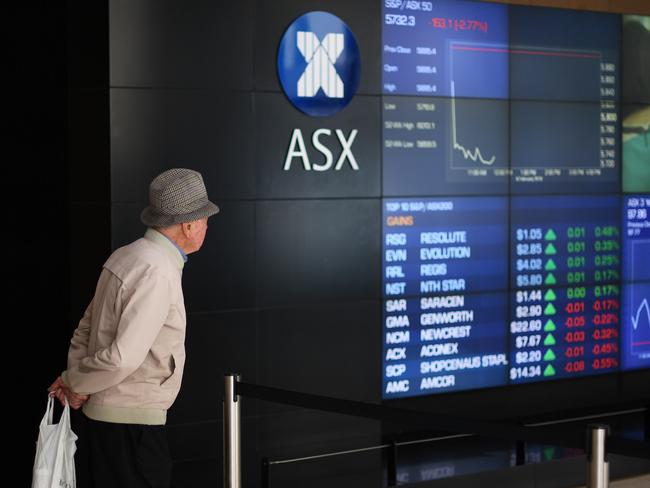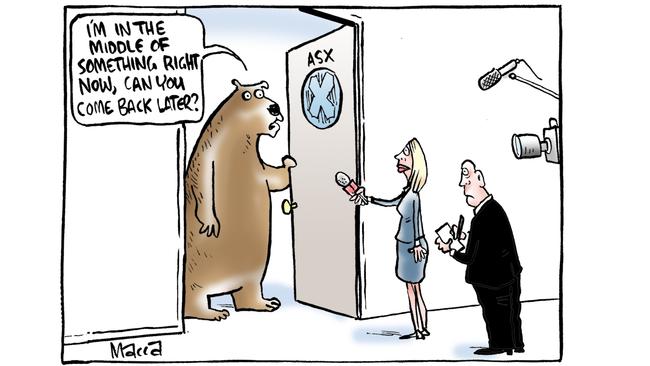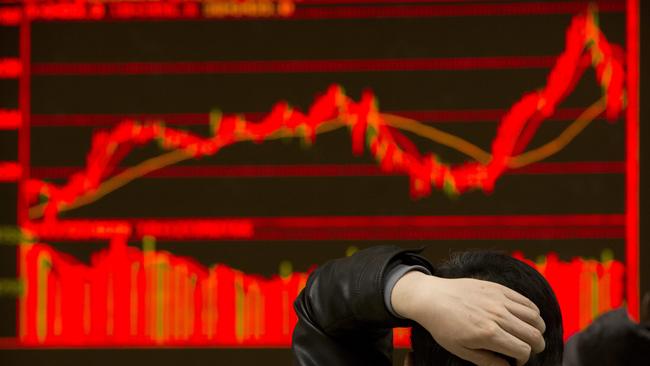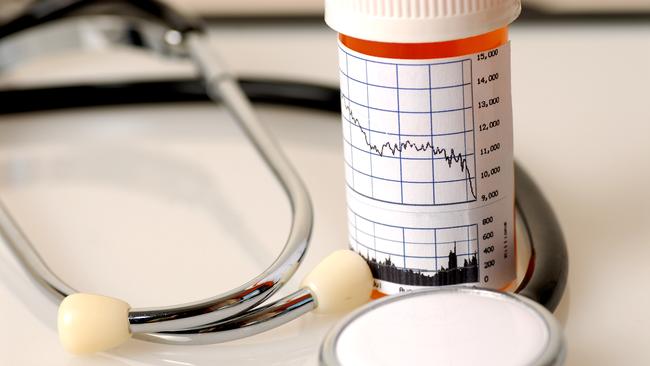Terry McCrann on ASX rout: What trauma? It will fade back to black
THIS is not a replay of October 1987, when we woke to the news of an “impossible” crash on Wall Street, nor is it 2008, when the entire world’s banking system almost collapsed, writes Terry McCrann.

Terry McCrann
Don't miss out on the headlines from Terry McCrann. Followed categories will be added to My News.
THIS is not a replay of October 1987 — when in that much more primitive communications era before alert-beeping smartphones, the internet, or even pay-TV and 24/7 business channels, we almost literally woke up to the news that Wall St had plunged a spine-tingling “impossible” 22.6 per cent in a single day.
ASX SHEDS $50 BILLION AS INVESTORS SCRAMBLE FOR THE EXITS
PETER TAYLOR: WHY WALL STREET’S PLUNGE IS NOT SO BAD
I write “impossible” because we had spent the half century since the Great Crash of 1929 and the Great Depression that subsequently gripped the world through the 1930s, confident in the belief that it could never happen again: either the Crash or the Depression.
We were now “too clever” to ever “let it happen” again.
Except, it suddenly had. In the 58 years between that day in October 1929 and that other day in October 1987, Wall St had never plunged in a single day by anything as big as the 13 per cent of 1929.
And then suddenly it plunged by nearly double that percentage: we were literally staring into the apocalyptic unknown.

TERRY MCCRANN ON US STOCK PLUNGE: IT’S DIFFERENT TO GFC OR 1987 COLLAPSE
BROKERS NOMINATE STOCKS TO WATCH IN 2018
Yet within weeks we discovered that not only was there life after such a market trauma — unless you were an “entrepreneur” named Bond, Connell, Elliott, Skase and a dozen or more others — but the trauma itself was almost just a passing, fading, inconvenience.
Both market and economy, both here and in the US, were back quickly to roaring life.
This is also not a replay of September — or October — 2008, when something similarly “impossible” happened; when a major US investment bank, Lehman Brothers, went belly up and not just all the major banks on the street but the entire global financial system was teetering on the edge of catastrophic oblivion.
Yes, trillions of dollars had to be deployed to stave off global financial disaster; and yes, the world — sans Australia and a lucky few others — plunged into the worst economic recession since the 1930s.

But once again, we also discovered that there was life after such trauma.
Indeed, for investors, it would be the best time ever as not just trillions but tens of trillions of dollars were added to global wealth.
Indeed, before the GFC the individual wealth of the super-rich was counted in single-digit billions; after it that wealth would be counted in tens of billions.
And who would have guessed the counting would include “entrepreneurs” from ostensibly communist centres of power China and Russia almost as much as in the wicked capitalist west.
Further, after 2008 the sort of one-day falls we saw over the last two days became almost a dime a dozen.
Yes, Monday’s 1175 point fall in the Dow was the biggest point fall ever — but it doesn’t get within cooee of the top 20 in percentage terms.

The easiest comparison is housing prices. A $100,000 fall in the value of a (say $500,000) family home in 2008 was serious money — to say nothing of a $100,000 fall in the value of the same, but then $200,000, home in 1987.
But today? Losing $100,000 off a $1.5 million home? Yes, you’d prefer not; but hey, you still have a life after it.
Since Donald Trump’s election the Dow had risen 44 per cent, adding something like $US7 trillion to US share values (and another $US8 trillion also to everyone else’s shares).
The two days have taken back 7 percentage points of that or around $US1.5 trillion of the $US8 trillion.
That still leaves $US6 trillion or more
More critically, there’s no “second leg” as there was in 2008.
Global investors are not over-geared into their investments; there isn’t a whole shadowy world of derivatives — CFDs and collaterised mortgage securities and the like — burrowed deep into global banks to dramatically multiply the equity losses.

Whereas before 1987 and again before 2008 big one-day movements were not just rare but “impossible”, they’ve become almost a regular event.
And most critically, we’ve discovered that we still get to “wake up” the next morning; the world doesn’t come to a shuddering stop far less an end.
Now those are numbers for the US; ours don’t look anything near as good.
Our market had only been dragged up 12 per cent from Trump’s election; the two days have snatched nearly half of that back.
The most likely course of Wall Street through the rest of the year is broadly sideways or something akin to a conventional correction (10 per cent plus) — and a lot, an awful lot of volatility along the way — as the two great contrasting forces fight to pull it in their direction.
On the one hand, pulling the market lower are the rises in both US short interest rates (the Fed’s policy rate) and long bond rates as the Fed’s money printing is unwound.

Pulling in the other direction is the specific (positive) impact of Trump’s two big policy initiatives — the corporate and personal tax cuts and the infrastructure spend — and the generally improving US economy, with rising inflation and wages.
The first puts a ceiling on the market; the second even more importantly a floor under it.
There is no, no, chance of a replay of either 2008 (the more serious) or 1987.
Obviously, we are totally hostage to how that plays out on a daily basis — we are back to waking up every morning to the coming down under trading day made on the other side of the Pacific overnight.
We are also hostage in a longer term and more fundamental way to how the broader financial and economic dynamics play out in the US — and also China.
Both, to my mind still look very positive.
Bottom line, in time, I doubt we will come to look back on this week in anything remotely like the same way we look back at those “one days in October 1987 or 2008”; or even really remember any broader trauma consequent on this week.


